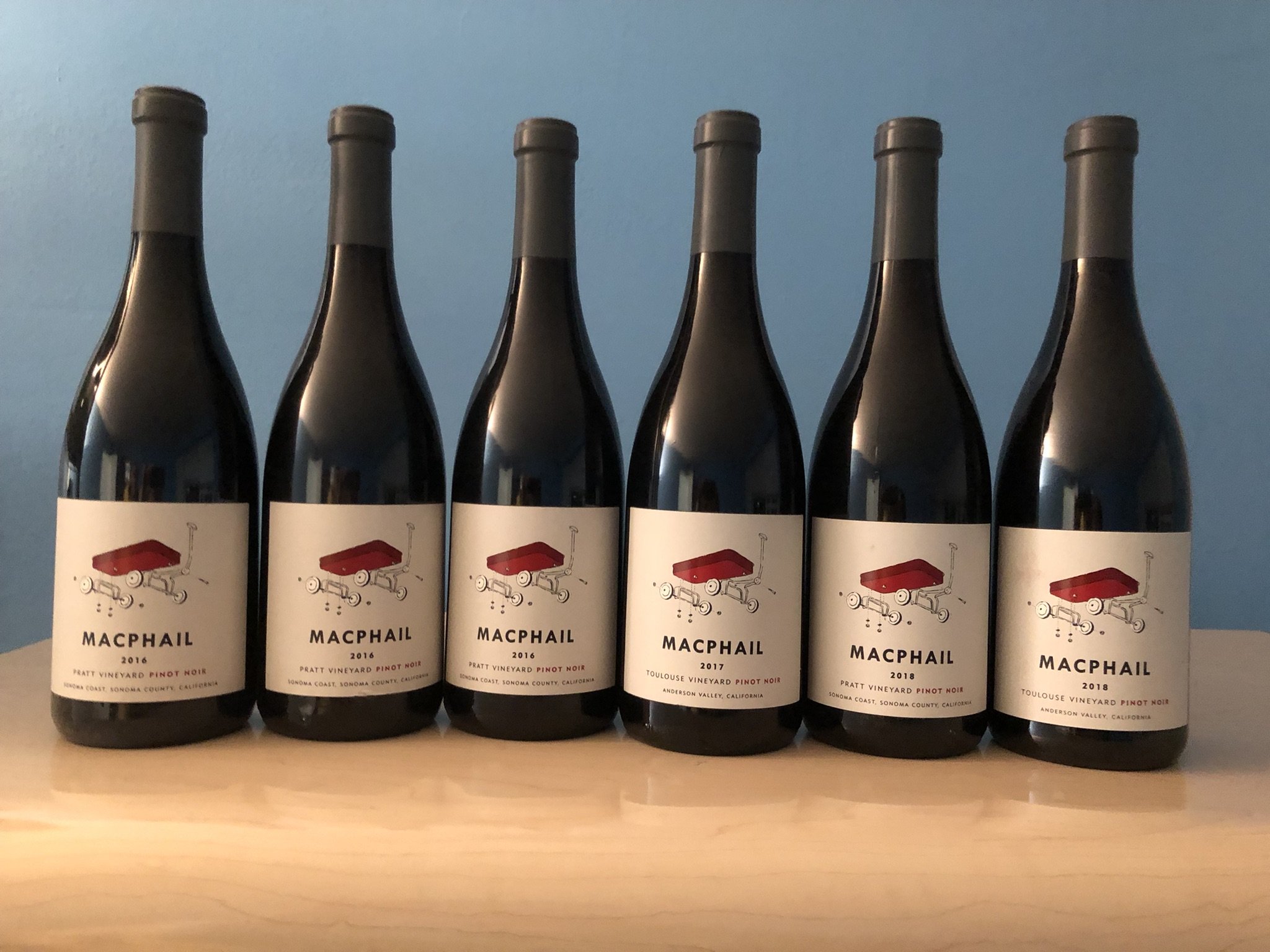July’s Wine New Year’s Resolution is falling in love with Pinot Noir
It’s time for another fun monthly New Year’s Resolution for Wine!
This is another chance to get that Resolution thing right!
It’s a monthly resolution. No more: OH NO, I SCREWED UP MY RESOLUTION AND ITS ONLY THE 3RD DAY OF THE YEAR.
Let’s talk about this!
In case you are new to this monthly New Year’s resolution for wine:
Welcome!
If you have been doing this all along:
Welcome back! This is number 7!
New Year’s wine resolutions are the way to go.
Wine Resolutions hold promise for good times and more joy!
January should not be the only time to make positive changes to your life.
No one should have to remember each monthly resolution so here is a brief recap:
If you want to see what you’ve been missing, here are the links for the past monthly resolutions. Do them in any order. Feel virtuous that you have completed a New Year’s Resolution. Woo!
Click here for January. The first wine resolution was about Chardonnay wine and comparing Old World and New World wines. I talk about those differences in a lot of blog posts. Definitely look this over if you want to know something about Old World Wines (that usually means Europe.) They have rules and regulations out the wazoo. Just saying.
Click here for February. This resolution was all about Champagne. No downside to finding something to celebrate with Champagne. (Spoiler Alert: Champagne is made with Pinot Noir)
Click here for March. March was all about the Beaujolais.
Click here for April. This resolution was about Riesling wine. It wears so many different hats. It also can totally mess with people who are trying to do a deductive blind tasting (that means they are trying to figure out what wine it is.)
Click here for May. We travelled to Spain. Such great value wines there.
Click here for June. That was an easy one. It was how not to be a lemming about wine. Don’t be a blind follower.
Now we are in July and we are resolving to fall in love with Pinot Noir.
To keep this a fun resolution, let’s narrow the topic. Let’s just do Old World (Europe, mostly just France) versus New World (let’s just say the United States) Pinot Noir. No point in going down a rabbit hole.
First, the good news:
Pinot Noir is really easy to love. It’s delicious! It works and plays well with food!
The bad news:
Pinot Noir is known as the heartbreak grape.
Wait! What?
The heartbreak is mostly for the winemaker.
It is not the easiest grape variety to grow. It is very fussy where it can grow well. It does not do well in the heat. The wine will lose most of it’s delicious flavors and taste too sweet. If it is grown in too cool a climate it may taste like cabbage. Ugh! Nothing wrong with cabbage, but not in my glass of pinot!
Because demand is high, and supply can be low, there can be heartbreak for the wine fan also. It is insanely hard to find a fantastic Pinot Noir at a really low price. Obviously really low is relative.
I hate when someone says something is “affordable.” What does affordable even mean? What one person sees as “affordable,” another person may see as crazy. It is safe to say that there are no incredible bargains to be had with this variety. Instead of saving money you may be wasting it. Trust me. Been there, done that.
But there is more good news:
You will find a style of Pinot Noir you will love. You just have to investigate. Maybe even compare Old World Style to New World.
They are different.
Let’s start.
In France, Pinot Noir is grown in Burgundy. (It is also grown in Champagne. Since that is an entirely different style, just read what I wrote in my post on Champagne and we will move on.)
In the United States, Pinot Noir is grown in various areas in California, Oregon and some other states (with mixed results.)
There are two major differences between the two worlds:
Terroir
Just in case you didn’t read my post on Useful Wine Vocabulary, and we are not doing quizzes here, this is how I defined terroir:
Terroir is like the 'personality' of the wine that comes from its surroundings. It is a French term, but used all over the world. It refers to the unique combination of factors that influence the taste and character of wine. These factors include the specific location where the grapes are grown, such as the soil type, climate, altitude, and even the angle of the slope.
So obviously, if the wine is made in different places, it will have a different personality.
Not only that, but some of the terroir in Burgundy is seriously pricey.
Just so you know :
Old World Wines usually have some sort of a Geographical Indicator (GI) listed on the label. Requirements can include where (geography), what (varietals used) and how (winemaking technique.) It goes from generic area to really specific, as in a specific vineyard within an already narrowly drawn area.
Generally, the more specific the label the higher the price. That is basic supply and demand. Whether the price is worth it and is more delicious for you - that is another matter.
The broadest (GI) is Bourgogne, which is basically the whole region. At that level, they may list that the wine is Pinot Noir. Then you get to the village and then to a specific vineyard. At that point, you have to know that it is Pinot Noir. It will not say it on the label.
Vineyards on a hill have better drainage and often have higher prices.
Even which side of the hill and when it gets the sun is important.
As with any real estate it’s LOCATION, LOCATION, LOCATION!
In Burgundy, Real Estate is king!
In the United States, Pinot Noir is able to grow in many different regions. Real Estate as king doesn’t play here. You will not have the incredibly expensive prices for the best Pinot Noir in the United States like you do in Burgundy.
The next major difference:
Style
In Burgundy, the winemakers often let the terroir speak for itself. Different villages will show different sides of the variety deliberately. This shows off why they deserve to be ranked higher than the lowly Bourgogne designation.
The style is usually lighter and more subtle. The alcohol will probably be lower. The flavors may be cherry and earthy. (Hold that thought until you read about the U.S.)
In the United States, the Pinot Noir is often more fruit forward. The flavors will be more blackberry than cherry. It will also have a fuller body and higher alcohol. (Helpful Reminder: when judging the body of the wine you should think: skim milk, whole milk or cream?)
Obviously there will be differences even within the United States, but generally they will be bolder and higher in alcohol than Burgundy.
Now comes the question:
Which one are you more likely to love?
Does quiet, elegant and restrained appeal to you?
Do you like slightly louder and up front?
In either case, you will have layers of delicious flavor.
The solution:
The best way to find out your style is to compare. You learn from the differences. You may not be able to put a description to a wine until you taste something different. Or at least you will know what you like more.
Cover the bottles. Put a number on it.
Put a number on the matching glass.
Taste and Compare.
Find out that one is from California.
The other is from Burgundy.
The wines we compared were basically the same price. The wine from California had 14% alcohol, and the wine from France had 12%. With 8 people tasting there was no clear winner.
There is a wine for everyone.
Macphail Pinot Noir wines were some of my favorites. Heartbreak when the fires and floods in Sonoma made it impossible to continue.
Resolve to find a Pinot Noir to love, even if there can be heartbreak. Have fun with the discovery. It’s a fun resolution to keep!
Cheers to delicious wine wherever you find it!!






